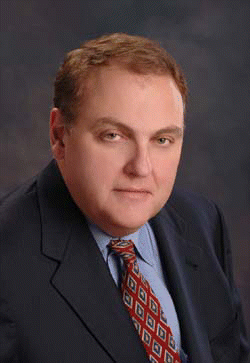Biocompatible, conforming, and easy-to-use materials-these are the key characteristics of innovations in middle ear reconstruction, according to several experts.
Explore This Issue
March 2007Whether the devices are titanium or shape-memory, or whether the prosthetics utilize autologous bone or soldering with laser, the quest is guided by these standards.
These developments are the culmination of years of incremental progress. In this report, ENToday briefly reviews some of the progress of the past decade and then points out recent advances that key opinion leaders consider to be critical.
Size of Prosthesis Influences Surgery Outcome
A hallmark study in 1995 had shown that the use of analytical models could predict the size of prostheses needed for optimal results after stapedectomy and tympanomastoid surgery.1 Noting the contribution of mechanical and acoustic models of the human middle ear to gauge the performance of various middle ear reconstructive procedures, the authors noted that model analyses could be used as the rationale for stapes prostheses of 0.6 to 0.8 mm in diameter in order to produce air-bone gaps of less than 12 dB and that, ironically, smaller-diameter prostheses produce larger air-bone gaps. These models also helped establish that the mass of a stapedectomy or ossicular replacement prosthesis could be 16 times greater than that of the stapes with little effect on the hearing result, and that the volume of the middle ear air spaces after tympanomastoid surgery should be at least 0.5 cc for optimal acoustic results. The models also helped establish the effectiveness of the round window graft in certain tympanoplasties as an important parameter determining the hearing result and helped show that the shield should be as rigid as possible to maximize postoperative hearing.
Autologous Incus and Diode Laser Soldering
A later retrospective study of tympanoplasty and ossicular chain reconstruction as a one-stage procedure involved the temporalis fascia for myringoplasty and a sculptured autologous incus to bridge the malleus to the stapes head and the malleus to the footplate.2 Of the 150 patients, 126 (84%) had a healed tympanic membrane three months postoperatively. One year later, 121 (81%) had an intact tympanic membrane, as did 119 (79%) five years later.
At this time, initial studies began to assess the potential use of diode laser soldering as a way to improve the mechanical stability of middle ear reconstruction.3 In that study, investigators evaluated the strength of soldered bonds by assessing the strength of soldered junctions that used fascia, cartilage, bone, and hydroxyapatite with a diode laser consisting of 810-nm wavelength and 50% albumin with 0.1% indocyanine green dye. By comparing the soldered bonds to those obtained with adhesive alone and by soldering 10 hydroxyapatite prostheses that were soldered to the stapes in human cadaver temporal bones, the investigators measured the force required to disrupt the bonds and found that the soldered bonds were significantly stronger.

Leave a Reply